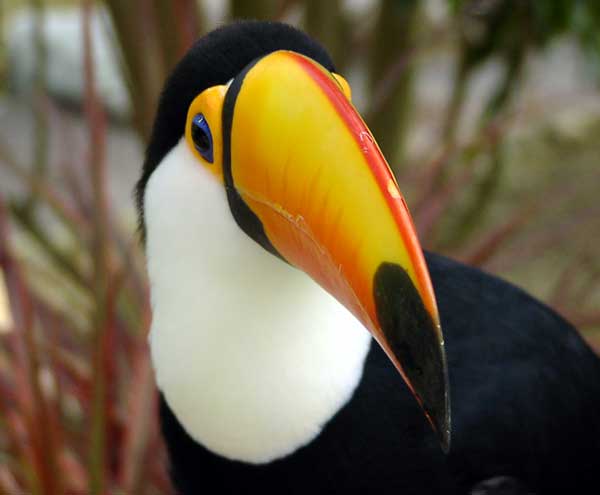|
Craspedonema Elegans
''Craspedonema elegans'' is a species of nematodes in the family Bunonematidae Bunonematidae is a family of nematodes in the order Rhabditida Rhabditida is an order of free-living, zooparasitic, and phytoparasitic microbivorous nematodes living in soil. The Cephalobidae, Panagrolaimidae, Steinernematidae, and Strong ... found in Brazil. References External links * Bunonematidae Nematodes described in 1928 Fauna of Brazil Agricultural pest nematodes {{Rhabditida-stub ... [...More Info...] [...Related Items...] OR: [Wikipedia] [Google] [Baidu] |
Animal
Animals are multicellular, eukaryotic organisms in the Kingdom (biology), biological kingdom Animalia. With few exceptions, animals Heterotroph, consume organic material, Cellular respiration#Aerobic respiration, breathe oxygen, are Motility, able to move, can Sexual reproduction, reproduce sexually, and go through an ontogenetic stage in which their body consists of a hollow sphere of Cell (biology), cells, the blastula, during Embryogenesis, embryonic development. Over 1.5 million Extant taxon, living animal species have been Species description, described—of which around 1 million are Insecta, insects—but it has been estimated there are over 7 million animal species in total. Animals range in length from to . They have Ecology, complex interactions with each other and their environments, forming intricate food webs. The scientific study of animals is known as zoology. Most living animal species are in Bilateria, a clade whose members have a Symmetry in biology#Bilate ... [...More Info...] [...Related Items...] OR: [Wikipedia] [Google] [Baidu] |
Nematode
The nematodes ( or grc-gre, Νηματώδη; la, Nematoda) or roundworms constitute the phylum Nematoda (also called Nemathelminthes), with plant-Parasitism, parasitic nematodes also known as eelworms. They are a diverse animal phylum inhabiting a broad range of environments. Less formally, they are categorized as Helminths, but are taxonomically classified along with Arthropod, arthropods, Tardigrade, tardigrades and other moulting animalia, animals in the clade Ecdysozoa, and unlike platyhelminthe, flatworms, have tubular digestion, digestive systems with openings at both ends. Like tardigrades, they have a reduced number of Hox genes, but their sister phylum Nematomorpha has kept the ancestral protostome Hox genotype, which shows that the reduction has occurred within the nematode phylum. Nematode species can be difficult to distinguish from one another. Consequently, estimates of the number of nematode species described to date vary by author and may change rapidly over ... [...More Info...] [...Related Items...] OR: [Wikipedia] [Google] [Baidu] |
Chromadorea
The Chromadorea are a class of the roundworm phylum, Nematoda. They contain a single subclass (Chromadoria) and several orders. With such a redundant arrangement, the Chromadoria are liable to be divided if the orders are found to form several clades, or abandoned if they are found to constitute a single radiation. Formerly, they were treated as a subclass in the paraphyletic "Adenophorea" assemblage, which has been mostly abandoned by modern authors. It is also suspected that the Chromadorea may not be monophyletic as delimited here; at least the Monhysterida seem to be a distinct and far more ancient lineage than the rest. Members of this class' bodies usually have annules, their amphids elaborate and spiral, and they all have three esophageal glands. They usually live in marine sediments, although they can live elsewhere. They have a more sophisticated pharynx than most roundworms. Members of this class can be identified by the presence of eight conserved signature indels (C ... [...More Info...] [...Related Items...] OR: [Wikipedia] [Google] [Baidu] |
Bunonematidae
Bunonematidae is a family of nematodes in the order Rhabditida Rhabditida is an order of free-living, zooparasitic, and phytoparasitic microbivorous nematodes living in soil. The Cephalobidae, Panagrolaimidae, Steinernematidae, and Strongyloididae seem to be closer to the Tylenchia, regardless of wheth .... References * De Ley, P.; Blaxter, M. L. (2004). A new system for Nematoda: combining morphological characters with molecular trees, and translating clades into ranks and taxa. Nematology Monographs & Perspectives. 2: 633–653. External links * Nematode families {{Rhabditida-stub ... [...More Info...] [...Related Items...] OR: [Wikipedia] [Google] [Baidu] |
Nematodes Described In 1928
The nematodes ( or grc-gre, Νηματώδη; la, Nematoda) or roundworms constitute the phylum Nematoda (also called Nemathelminthes), with plant- parasitic nematodes also known as eelworms. They are a diverse animal phylum inhabiting a broad range of environments. Less formally, they are categorized as Helminths, but are taxonomically classified along with arthropods, tardigrades and other moulting animals in the clade Ecdysozoa, and unlike flatworms, have tubular digestive systems with openings at both ends. Like tardigrades, they have a reduced number of Hox genes, but their sister phylum Nematomorpha has kept the ancestral protostome Hox genotype, which shows that the reduction has occurred within the nematode phylum. Nematode species can be difficult to distinguish from one another. Consequently, estimates of the number of nematode species described to date vary by author and may change rapidly over time. A 2013 survey of animal biodiversity published in the mega jo ... [...More Info...] [...Related Items...] OR: [Wikipedia] [Google] [Baidu] |
Fauna Of Brazil
The wildlife of Brazil comprises all naturally occurring animals, plants, and fungus, fungi in the South American country. Home to 60% of the Amazon Rainforest, which accounts for approximately one-tenth of all species in the world, Brazil is considered to have the greatest biodiversity of any country on the planet. It has the most known species of plants (55,000), freshwater fish (3,000), and mammals (over 689). It also ranks third on the list of countries with the most bird species (1,832) and second with the most reptile species (744). The number of fungal species is unknown but is large.Da Silva, M. and D.W. Minter. 1995. ''Fungi from Brazil recorded by Batista and Co-workers''. Mycological Papers 169. CABI, Wallingford, UK. 585 pp. Approximately two-thirds of all species worldwide are found in tropical areas, often coinciding with developing country, developing countries such as Brazil. Brazil is second only to Indonesia a ... [...More Info...] [...Related Items...] OR: [Wikipedia] [Google] [Baidu] |


